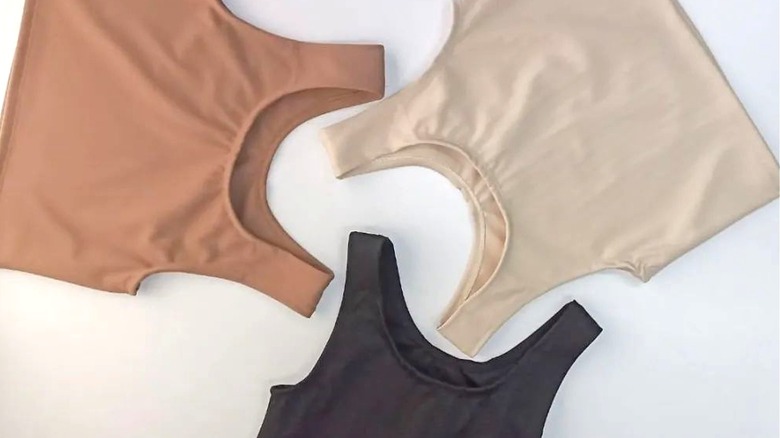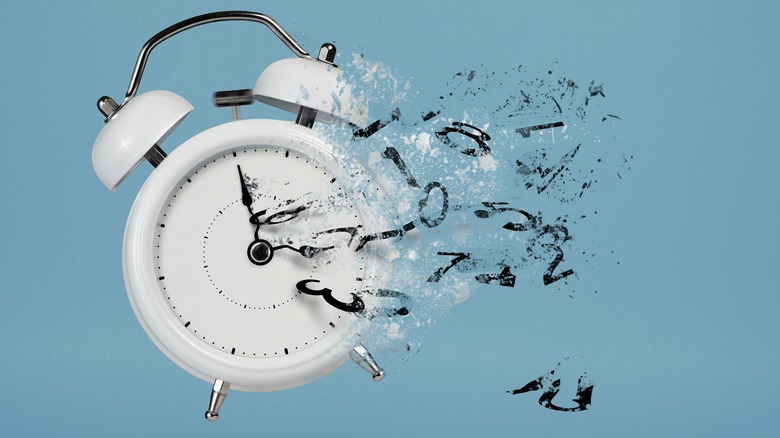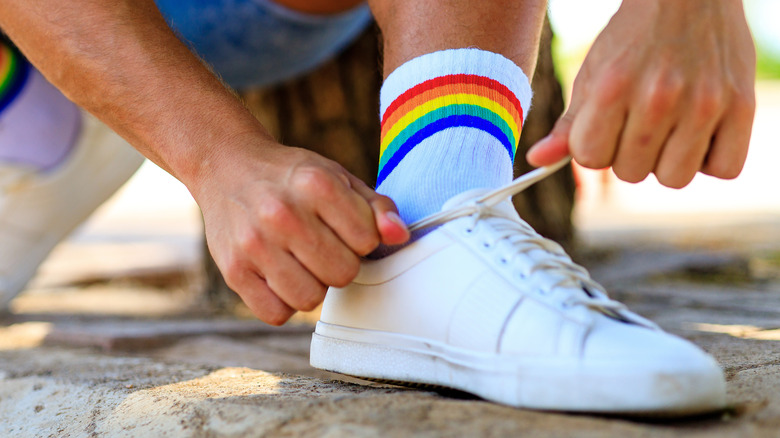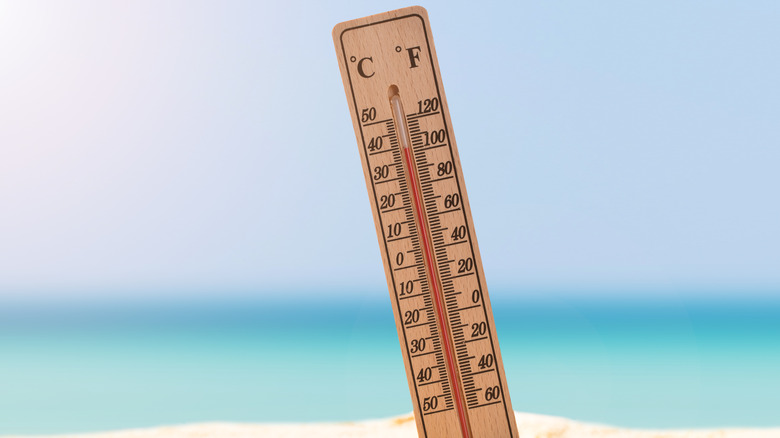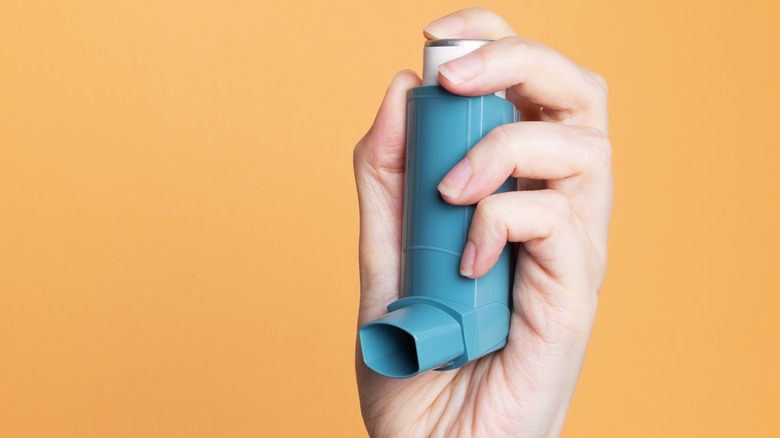Here's How To Know If Chest Binding May Not Be The Best Choice For You
Binding one's chest is typically used by gender non-conforming, non-binary, and transgender people to achieve a more masculine appearance, as discussed by WebMD. If you're exploring binding your chest, regardless of your reasons for it, there is a lot that you need to know about the process first. Unfortunately, it isn't quite as simple as covering up your breast tissue and calling it a day.
While a study published in the Journal of Adolescent Health (via PubMed) is among the sources to note positive benefits for those who choose to bind their chests due to dysphoria, for example, it is important to keep in mind that it may not be the right choice for everyone — just like top surgery might not be. Here, we've laid out some of the reasons why you might want to reconsider chest binding and speak with a medical professional you trust about the options available to you based on your identity and goals.
You shouldn't wear a binder for an extended length of time
One thing to know about binding your chest is that you shouldn't wear a binder for an extended length of time. Healthline writes that doing so isn't safe and could lead to health problems associated with binding. These risks include everything from infections to pain and issues with breathing — all of which are side effects you probably don't want.
Rainbow Project advises those who bind their chests not to do so for more than 8 hours at a time, revising this to a maximum of 6 hours for those under the age of 18. Point of Pride also uses 8 hours or less as its guideline for binding, while additionally issuing the reminder that binders should not be worn to sleep. Both Rainbow Project and Point of Pride advise taking breaks from binding throughout the day if at all possible, so this is something to factor in as it relates to your daily schedule.
Don't exercise in a binder
If you live an active lifestyle, it is also important to note that you generally should not exercise in a binder. The exact advice surrounding this differs by source, with Healthline explaining that you might be better off using something with less compression to avoid issues such as injury or breathing difficulties. Point of Pride suggests removing your chest binder outright for exercise, while one tip offered by Rainbow Project is to get a binder one size bigger than normal if you need to wear one while exercising.
In a handout from YSJActive at York St. John University in England, it is mentioned that perspiring under a binder could increase your risk of developing an infection, and it advises that you dry your binder following exercise for this reason.
Also, note that the guidance in relation to the use of binders while exercising differs to some extent based on the activities in question. If you are participating in a high-impact activity, for example, it might be safer for you to skip binding.
Wearing a binder could cause you to overheat
Regardless of whether or not you choose to exercise in a binder, binding might not be right for you if you are someone who is sensitive to higher temperatures. Henry Ng, MD, told Cleveland Clinic that this is one risk for patients who bind their chests, sharing, "There's a serious potential to overheat while wearing these types of devices. Nearly everyone I've worked with has talked about how they can feel warm to the point of overheating while wearing chest binders on summer days."
Breast Care Center Miami, for instance, suggests that those who bind their chests make an effort to stay hydrated because of the risk of overheating. Also, take into consideration the climate where you live and your level of activity to determine if binding your chest could pose risks to you because of the heat. Add in what we've already mentioned related to perspiration and the risk of infection, and you have the potential for even greater concerns.
Avoid chest binding with certain underlying conditions
Per WebMD, you might want to skip binding your chest if you have a number of underlying medical conditions that could be affected by doing so. This list from WebMD includes conditions as wide-ranging as asthma, fibromyalgia, lupus, and scoliosis. Likewise, Dr. Ng explained to Cleveland Clinic that respiratory conditions shouldn't be combined with chest binding, saying, "People who have asthma or breathing problems shouldn't bind during an acute illness and should instead wear different types of clothing — hopefully, ones that still let them be who they are." Cleveland Clinic also notes that binding can cause issues with your muscles and skeleton, which is one reason why conditions such as scoliosis could be affected.
If you have a medical condition that could be affected by any aspect of chest binding, this is something that you should discuss with a medical professional before proceeding. Depending on your personal circumstances, binding may or may not be the right option for you.
